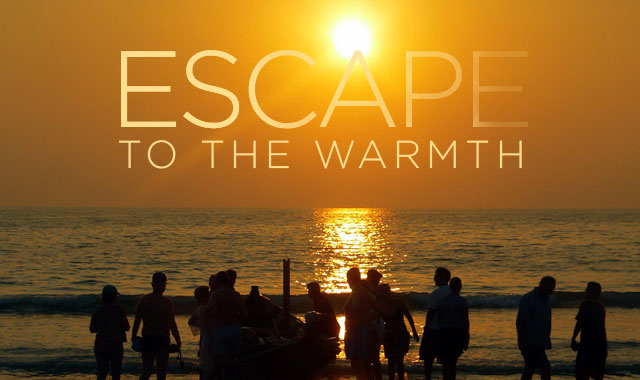Ruth Wikoff-Jones, CSEP, is a Senior Event Purchasing Manager for One10. Her responsibilities include designing meeting, event, and travel reward programs for Fortune 1000 clients, preparing budgets, researching and presenting creative program elements and enhancements, and also handling hotel and third-party vendor negotiations and procurement in support of the One10 sales organization. Ruth provides training and mentoring for new company associates. She also holds a Certified Special Event Professional (CSEP) certification, currently serves on the ILEA International Education Council, and has been a member of ILEA since 2003.
Escape to the Warmth — Long-distance planning the ideal corporate get-away.
As we continue to shiver our way through this harsh winter, it’s not difficult to imagine anyone wanting to plan the perfect warm-weather corporate get-away. But, that’s often easier said than done. Challenges of long-distancing planning may include miscommunication, cultural differences and even technology glitches. Ruth Wikoff-Jones, Sr Event Purchasing Manager for One10, offers her expert advice on the best ways to plan the perfect meeting or event, whether your client’s ultimate destination is California or the Caribbean islands.
Q. Briefly tell me what you do for Aimia?
A. I'm a Senior Event Purchasing Manager for One10, and my role is to work with new and existing clients to develop meeting and event solutions to engage employees and customers.
Q. How often do you plan warm-weather corporate get-aways?
A. Ninety-five percent of our incentive programs are for warm-weather destinations. Aimia designs loyalty reward programs for our clients to provide incentives to their employees or sales force. This typically involves a trip, and most people would prefer warm weather or exotic destinations such as the Caribbean or Hawaii. Even though our winter in Minnesota has been particularly harsh this year, it hasn’t significantly increased the popularity of clients’ desire for warm weather destinations. They’ve always been popular.
Q. What kind of agenda would your meeting planners have for a site visit?
A. This depends on the type of site inspection – destination/hotel selection or operational. Site inspections often include our sales staff and the client to ensure everyone has the same understanding of the program.
For example, on a destination/hotel selection site visit, the group may visit five different hotels to make sure they’re getting exactly what they want. They might also visit local attractions or venues to get a sense of what the group can do in the destination.
Alternatively, an operational site inspection is very detailed. They’d go through every step of the event, beginning with the arrival. In other words, they’d work with all the vendors providing services, such as attendee transport from the airport to their accommodations. After that, the meeting planner would perform a full inspection of guest rooms, meeting rooms, function areas, menu tasting, on-site restaurant, off-site experiences, to name a few.
We might also partner with a destination management company and they would be included in all aspects of the pre-event inspection. Their contribution might include décor, demonstrating what the site will look like once set up is complete, expectations for service, and so on. If outside or downtime activities are on the agenda, they’d review those as well.
In a very compressed time frame, the meeting planner goes through every element of the program which helps to narrow down choices. They look at all the issues and consider all the factors involved in making the guest experience the best it can possibly be.
Q. What’s the most important thing to keep in mind when long-distance planning?
A. Communication is key. It’s important to make sure everyone is in the loop (as is appropriate), with regard to the planning process. Sometimes it’s preferable to just pick up the phone rather than e-mail. It allows you to cut to the chase faster and be really clear. Then follow up emails can verify the conversations. What’s most important is that our clients feel comfortable with what’s going on, which is why we maintain a regularly scheduled communication update with them.
Q. Are there any online tools or apps you find helpful with long-distance planning?
A. At One10, we’re beginning to utilize newer technologies, starting with OneNote and surface tablets. Everything needed to plan the event is entered into the OneNote Notebook, so everyone has access it. We’ll also use Cvent for registration, sourcing and mobile applications. Our DMC sourcing is handled through Eved.
Q. Any other tips or advice?
A. I think the biggest thing for successful long distance planning - and especially international planning - is to make sure you communicate everything in writing. Even then, a planner should expect some adjustments to agreements due to cultural differences with an international destination. As such, it’s important to understand cultural differences at the beginning of planning.










